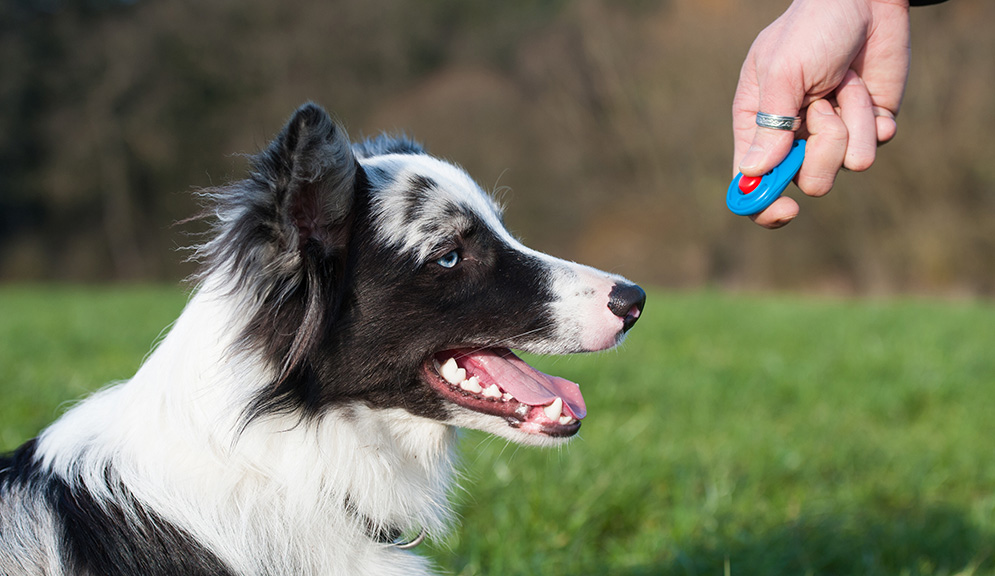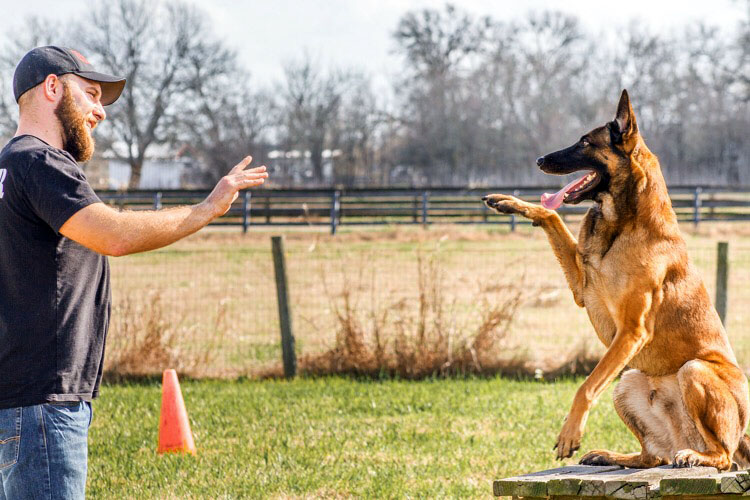Newbie's Guide to Successful Pet Dog Training at Home
Effectively training a pet dog at home needs a nuanced understanding of canine behavior and effective communication techniques. Developing clear training objectives, utilizing premium incentives, and preserving consistency throughout household members are critical aspects. Integrating training right into everyday regimens can improve both involvement and retention.
Recognizing Pet Dog Actions
Comprehending canine behavior is necessary for efficient training and fostering an unified relationship in between people and their canine companions - Puppy Training. Pets connect primarily with body movement, articulations, and faces, making it critical for owners to analyze these signals precisely. Recognizing behaviors such as tail wagging, growling, or shrinking can provide understandings right into a dog's mood and intents
In addition, recognizing the all-natural impulses of pet dogs, such as their pack attitude, helps proprietors establish management duties within the household. This is vital for producing an organized environment where pets feel protected and are extra responsive to training. Pets are additionally affected by their socializing experiences; very early direct exposure to different atmospheres, individuals, and other animals can substantially shape their actions later in life.
Common behavioral concerns, such as hostility, anxiousness, or too much barking, usually stem from misconceptions or unmet requirements. Observing and attending to these issues without delay can protect against escalation and guarantee a positive training experience. By cultivating a deep understanding of pet actions, owners can tailor their training techniques to suit their canine friends, inevitably leading to a well-behaved and happy family pet.

Crucial Educating Devices
A well-appointed training area can significantly boost the efficiency of pet training in your home. Important training tools guarantee that both the trainer and the canine can involve in productive sessions that cultivate learning and bonding.

Spending in a strong chain and a comfy, well-fitting collar or harness is essential for safety and security and control. These devices help establish limits and guarantee the pet dog stays safe and secure during training. In addition, a marked training location, without distractions, help focus for both the pet and the instructor.
Educating aids such as training pads, cones, or agility tools can additionally enhance the experience by presenting variety and difficulties. Having a notebook or digital app for tracking progress can be vital, allowing you to note successes and locations for enhancement. Using these crucial tools will certainly develop a positive training setting and lay the foundation for effective understanding.
Producing a Training Routine
Developing a constant training regimen is necessary for efficient canine training at home. A well-structured routine not only helps in enhancing preferred actions but also gives your dog with a complacency and predictability. To create an efficient training regular, begin by identifying details training goals, such as fundamental commands, chain walking, or house-training.
Select a marked time each day for training sessions, preferably when your dog is sharp and responsive. Sessions must be brief, roughly 5 to 15 mins, to maintain focus and protect against tiredness. Uniformity in timing and setting will boost your canine's understanding experience.
Incorporate training into day-to-day activities to reinforce skills. As an example, practice commands throughout walks or nourishment, which integrates discovering right into all-natural routines. Additionally, remain versatile and adjust the routine as required, fitting your pet's energy levels and mood.
Positive Reinforcement Strategies

When implementing positive reinforcement, it is necessary to select rewards that are inspiring click here for more info for your dog. High-value deals with, such as little items of chicken or cheese, can be specifically reliable throughout training sessions. In addition, varying the incentives can preserve your pet dog's check over here passion and interest.
Beginning with easy commands, like "sit" or "remain," and progressively progress to a lot more complex jobs. Uniformity is key; make sure that all member of the family use the same commands and benefit systems to avoid complication.
Moreover, it is crucial to continue to be person and avoid frustration. Canines, like people, discover at their very own rate. By cultivating a supportive training setting through positive reinforcement, you can improve your dog's discovering experience while reinforcing the bond in between you and your furry buddy, preparing for effective training end results.
Usual Training Challenges
While training a dog in your home can be a rewarding experience, it frequently includes a set of usual obstacles that can check both persistence and uniformity. One widespread issue is distraction. Dogs may become easily sidetracked by noises, movements, and even scents in their setting, making it hard to keep their focus during training sessions.
Another obstacle is inconsistency in commands and reinforcement. If relative make use of different cues or rewards, it can puzzle the dog and prevent progress. Establishing a unified method is necessary for reliable communication.
Furthermore, pets can experience irritation or anxiety, particularly if they do not understand what is anticipated of them. This can bring about unfavorable actions, such as eating or barking.
Lastly, the timing of support is important. Delayed view incentives can reduce the efficiency of favorable support, as pets may stop working to attach the actions with the benefit.
Overcoming these obstacles requires dedication, clear interaction, and a structured training plan - Puppy Training. Identifying and attending to these usual obstacles will certainly lead the way for a much more satisfying and effective training experience in your home
Verdict
In conclusion, effective pet dog training at home necessitates an extensive understanding of canine actions and reliable communication strategies. By developing clear training goals and making use of high-grade deals with together with positive support, the training procedure comes to be more fulfilling for both the canine and the instructor.
Developing a regular training regimen is essential for effective pet dog training at home.Positive reinforcement strategies are fundamental to reliable pet training, advertising wanted behaviors through rewards instead than punishment. By cultivating a helpful training setting through positive support, you can boost your canine's learning experience while enhancing the bond in between you and your fuzzy buddy, laying the foundation for effective training end results.
In final thought, successful pet training at home requires a thorough understanding of canine actions and reliable interaction techniques. By developing clear training objectives and making use of top notch deals with together with positive support, the training process ends up being a lot more satisfying for both the trainer and the pet dog.